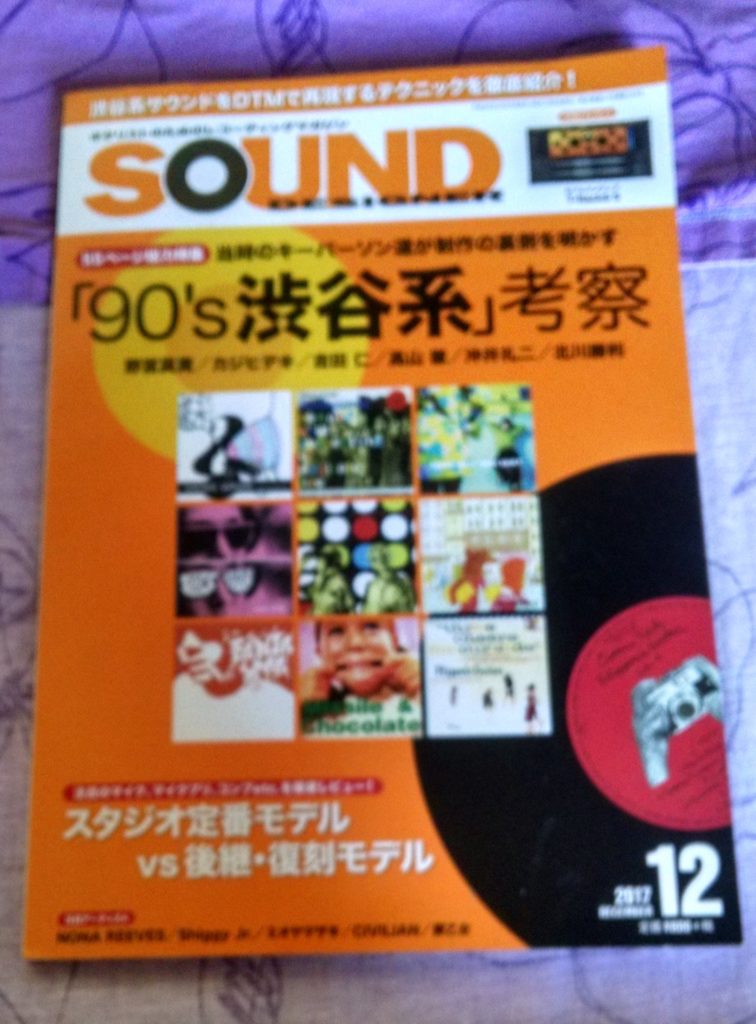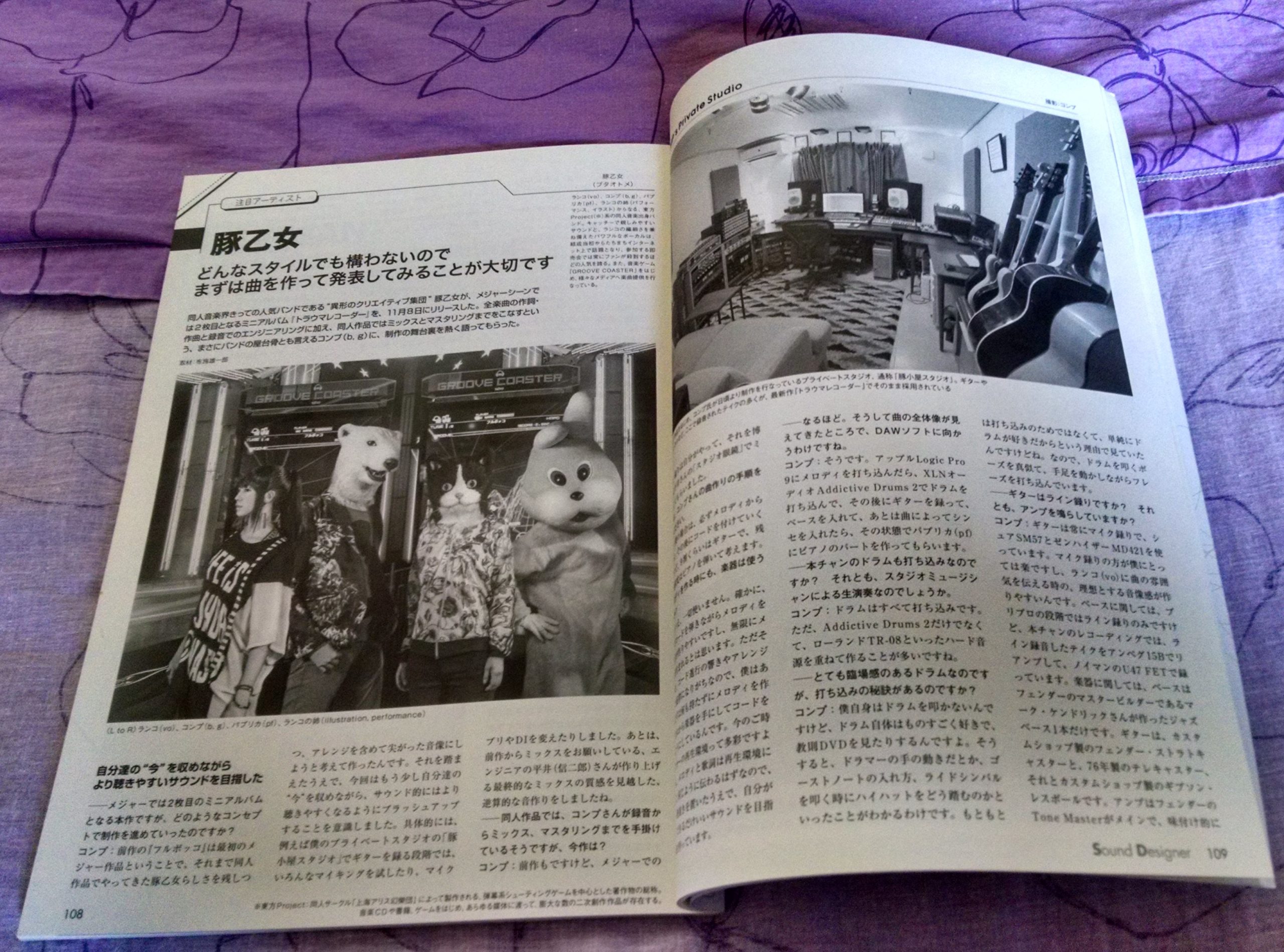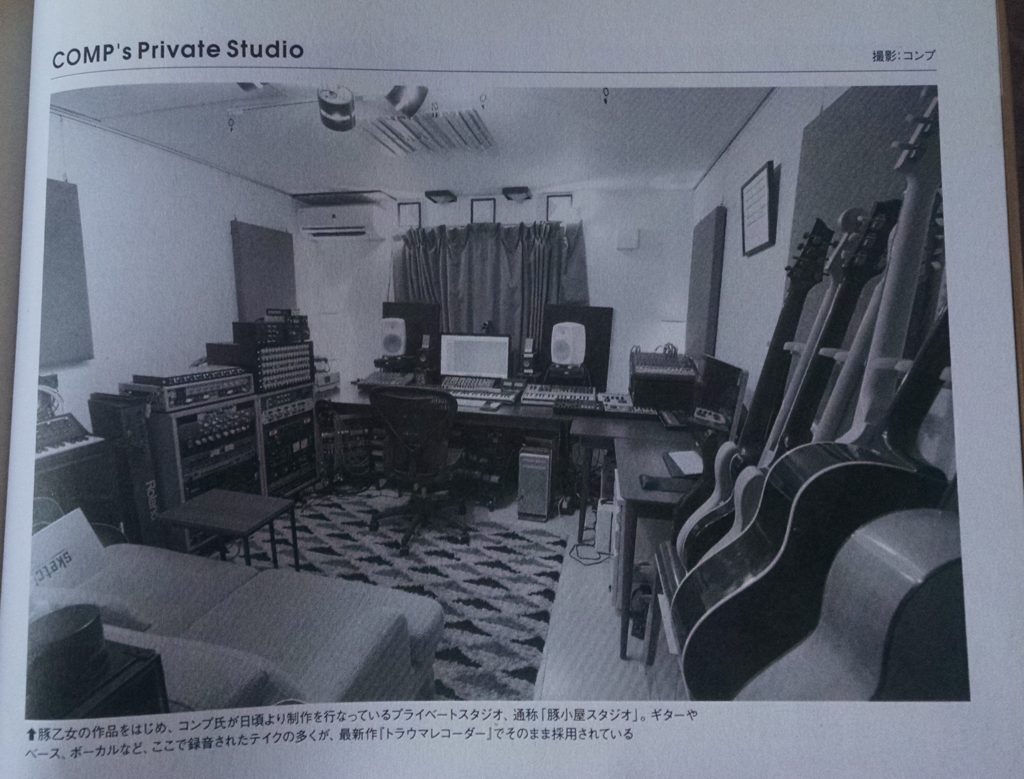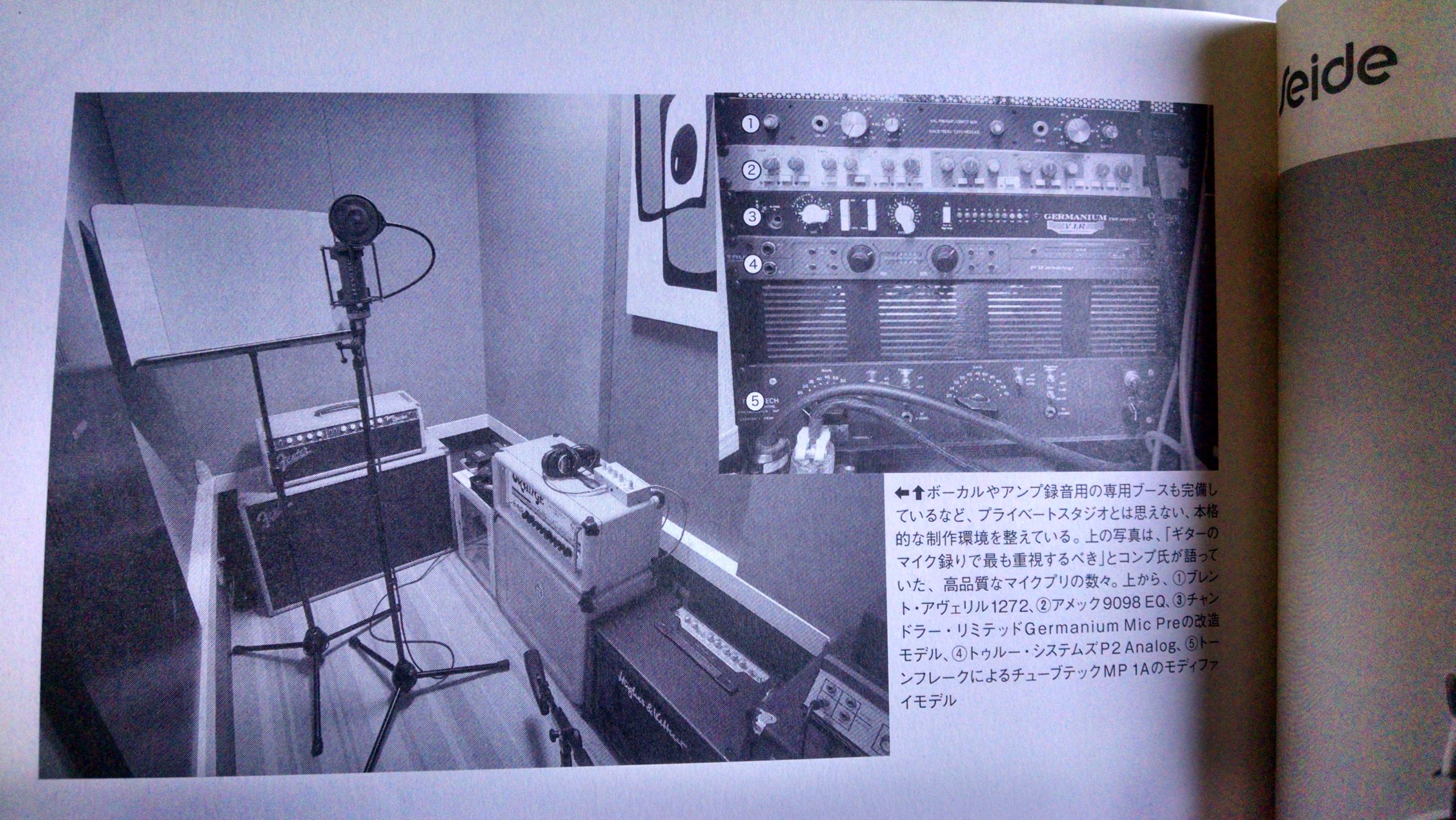An old interview with Comp from the magazines I bought specifically for BUTAOTOME articles. Now it has been finally translated! This has been challenging since some specific words are used and I know absolutely nothing about music-making, recording, and that kind of stuff. But it was fun to research them, and I hope it’s clear to read.
Sound Designer was a magazine about music recording aimed at guitarists. I used the past verb because it suspended the publication as of February 2020. Anyway, the main topic of this interview is of course how Comp makes music and records stuff at home, and we also discover his equipment and some of his secrets.


It doesn’t matter what style you use, it’s important to write and release a song first
BUTAOTOME, one of the most popular bands in the doujin music world and the “strange-looking creative group”, released their second mini-album “Trauma Recorder” on November 8.
We interviewed Comp, who is the backbone of the band and in addition to composing, writing lyrics for all the songs and engineering the recordings, he also handles the mixing and mastering of the doujin works. He passionately talked about what goes on behind the scenes during the production process.
I aimed to a more listenable sound while capturing our “current” selves
This is your second mini-album released through a major label, what kind of concept did you follow when making it?
Our previous album, “Furubokko”, was our first major work, so we wanted to keep the “BUTAOTOME” feel that we had with our previous doujin works, but also create a sharp sound image, including the arrangements. With that in mind, this time I made a conscious effort to polish it to make it more listenable sound-wise while capturing a little more of our “current” selves. For a specific example, during the guitar recording stage in my private studio, the “Butagoya Studio”, I experimented with various miking ways and changed the mic preamp and DI. In addition, I tried to create a backward-looking sound by anticipating the feel of the final mix that Hirai-san (Shinjiro), the engineer who has mixed the previous album, would make.
I know that you are in charge of the recording, the mixing, and the mastering of your doujin works. And this one?
As with the last album, for the major releases, I did the recordings, and then they were mixed at Hirai-san’s “Studio Megane” in Hakata.
So, what is your songwriting process, Comp?
In my case, I always start with the melody. After that, I add chords, about 90% of the time I use the guitar, and the remaining 10% I use the piano and think about it.
Do you also use instruments to create melodies?
No, I don’t use them at all. It’s certainly easier to create melodies while playing chords on the guitar, and I think an infinite number of melodies would come up. But that tends to result in melodies that rely on the arrangement and the sound of the chord progression, so I try to create a melody without any chord first and then add them with the instruments in hand. In this current era, the melody should be transmitted the same regardless of the listener’s playback environment, so I put the most emphasis on it and then make music aiming for the best possible sound that I can think of.
I see. So once you have an overall picture of the song, you head to the DAW software.
Exactly. Once I input the melody into Apple Logic Pro 9, I’ll use the XLN Audio Addictive Drums 2 to program the drums, and then I’ll record the guitar, I’ll put in the bass, and then once I added the synths depending on the song, I’ll ask Paprika to make a piano part in that state.
Are the drums in the actual take also programmed? Or are they performed live by studio musicians?
The drums are all programmed. But in addition to Addictive Drums 2, I often layer in hard sound sources like the Roland TR-08.
The drums feel very realistic, do you have a secret on how you program them?
I don’t play the drums myself, but I like drums so much, and I watched instructional DVDs. In this way, I understood how a drummer’s hands move, how they put the ghost notes in, and how they step on the hi-hat when they strike the ride cymbal. I originally watched them not for the sake of playing, but simply because I like drums. So I mimick the pose of a drummer and move my arms and legs as I input the phrases.
Do you line-record your guitar? Or do you have your amps blaring?
I always mic-record my guitar, using a Shure SM57 and a Sennheiser MD421. It’s very simple for me to record with a microphone, and it’s easy to create the ideal sound feel when I’m trying to convey the mood of the song to Ranko. As for the bass, in the pre-production stage, I only line-record it, but for the actual recording, I re-amped the line-recorded takes with an Ampeg 15B and recorded them with a Neumann U47 FET. About my instruments, the bass is a single jazz bass built by Fender’s master builder Mark Kendrick. My guitars are a Fender Custom Shop Stratocaster, a ’76 Telecaster, and a Gibson Custom Shop Les Paul. My main amp is a Fender Tone Master, and I also used an Orange for flavor. Also, my acoustic guitar is a Gibson J-45 that has thin gut strings.
The quality of a guitar’s mic recording can change dramatically with a mic preamp
Based on your experiences, tell us about what you feel is the key to mic-recording guitars at home.
Microphone recording usually tends to focus on the instruments and amps, but in terms of recording, besides the right and left hands, instruments, amps, shields, and power supply, the mic preamps are very important. From a guitarist’s perspective, changing guitars or buying a new amp is more exciting, but in terms of sound quality, changing a mic preamp makes a dramatic change. So, first and foremost, I think it’s a good idea to consider getting a quality mic preamp. It will make a difference in the presence and persuasiveness of your sound. It can also be used for vocals recording, and I think it’s definitely worth having one.
What kind of mic preamps did you use for this recording?
I mixed the two mics and I used an Amek 9098 EQ for the SM57 and a Brent Averill 1272 for the MD421. I think that the amount of information that a recorded sound has is the most important thing, and the various processes that we do later on with the plugins will reduce that. I can reduce it after it’s recorded, but I can’t increase it beyond the recorded sound, so I think it’s very important to stick to that.
So how do you record the vocals?
In our doujin works, I have been using a Manley Reference Cardioid Microphone (vacuum tube microphone), but this time I borrowed a Neumann M149 from Hirai-san and recorded the vocals with that. For the previous album, I used a Neumann U67, but I thought the M149 would be a better fit, so I tried it and I certainly preferred it.
What was the difference?
I preferred the M149 because of Ranko’s loud voice and the distortion of the microphone when she raised her voice. Also, I can record with a manageable sound, which reduces the song processing afterward. For vocals recording, the M149 is followed by a Universal Audio’s 1176 AEs (compressor) through a ToneFlake’s modified TubeTech MP 1A (mic preamp).
What’s the appealing factor of Ranko’s vocals?
It’s the ability to clearly understand the lyrics. It’s not so much the smoothness of her voice, but her “tones” that make them easy to understand, and it’s the same when we perform live. I think that’s her best feature, and her voice tones are appealing to me because I want to strongly deliver the melody and the lyrics to the listener.
At last, do you have a message for our readers who are making music at home?
Instead of worrying about “having crappy equipment” or “not being a good performer”, write a song first, no matter in what style, and always try to publish it. I think that’s really important in making music. Sometimes I think “I could do better with this equipment” but I try to act first before I worry about it. The next step is to set a deadline for yourself to complete everything and have someone else listen to it. If you keep doing this, I think you’ll get closer and closer to your ideal music. As for me, my result is “Trauma Recorder”. This work captures our present moments, and I would be really happy if you can feel them.

